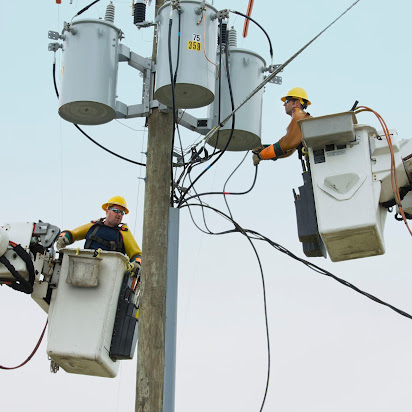4 years ago Khaled Ismail
Working safely around high-voltage conductors is a challenge for many workers. High-voltage systems are generally associated with utility services and heavy industry, such as pulp mills, sawmills, and mining operations. With care and precise planning, you can operate equipment and tools safely around these potentially lethal power lines.
This part is designed for workers who must work close to high-voltage equipment and conductors. It explains why high-voltage systems are dangerous. It lists the minimum distances you must keep away from live power lines and explains what you should do if you can’t maintain these limits of approach. It also describes common problem areas and gives safe work practices for working close to overhead lines around construction sites and for operating equipment around power lines.
Identifying High-voltage overhead conductors

Overhead high-voltage conductors are usually installed at the top of utility poles. If there is more than one conductor, they are usually placed side by side on a cross arm. If there is a transformer on the pole, the high-voltage conductors are mounted above it. These are general guidelines. Employers are responsible for accurately determining the voltage of all conductors on the pole or in the work area.
An H-frame configuration may be used to facilitate the installation of transformer bank platforms on older systems. They are most often seen in alleys. The illustration on page 4 shows a common single-pole configuration.
Comments
Post a Comment